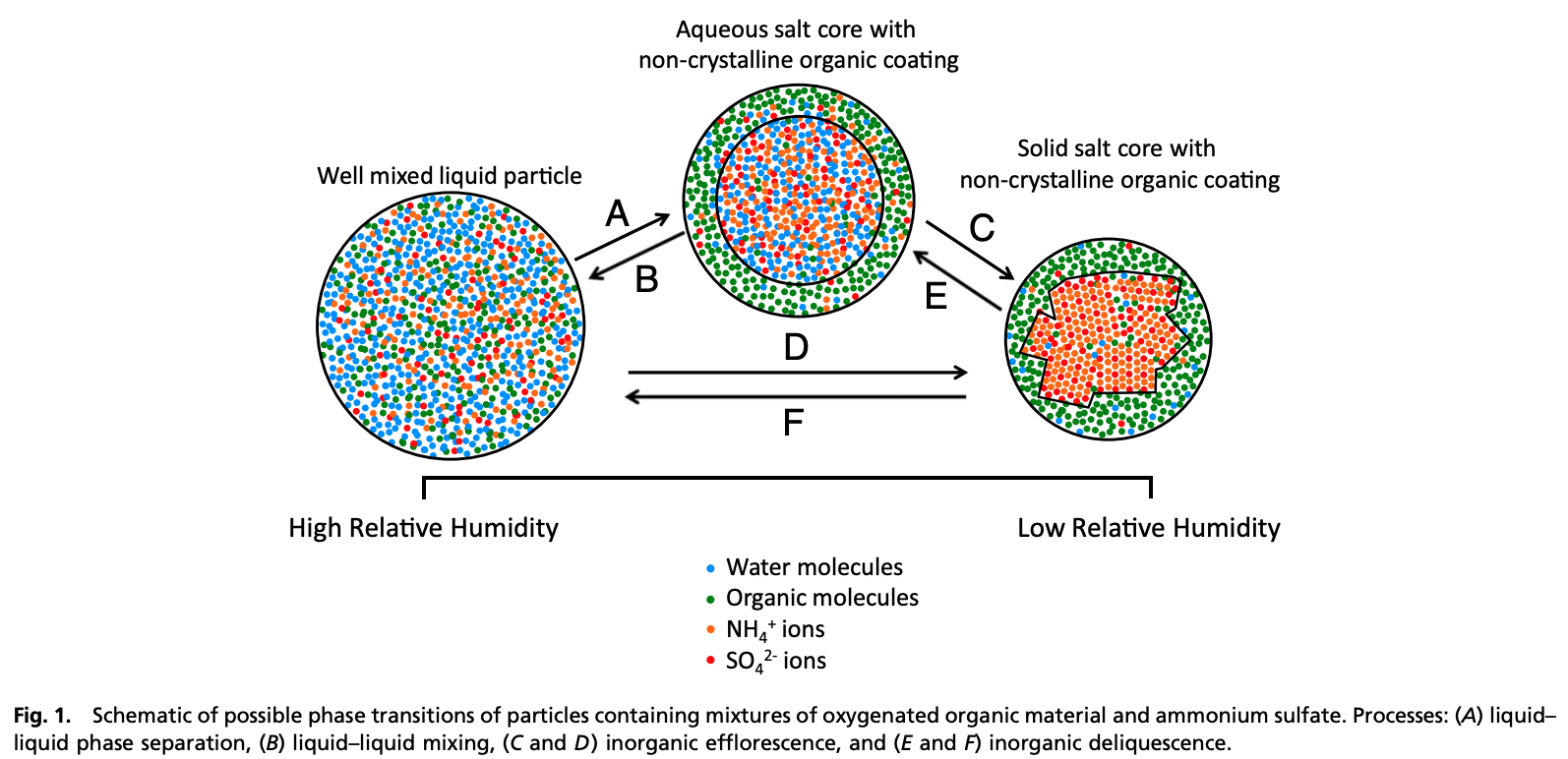Images reveal that atmospheric particles can undergo liquid–liquid phase separations
4.27.19
When liquid-liquid equlibrium (LLE) happens within an aerosol particle phase separation occurs. Compounds are partitioned within each phase, the reuptake of fas species changes, and other various particle parameters are different. This affects atmospheric reactions and climate predictions. This paper shows LLE within aerosol particles because up until now it's unknown the extent to which this actually occurs or not. This study used real-world particles to demonstrate LLE.
Alpha-pinene was split using ozonolysis and this organic material was condensed onto ammonium sulfate seed particles to produce the aerosols used in this experiment. These materials were pumped into a continuous flow chamber with constant temperature and relative humidty (RH). To measure the particle composition a time-of-flight mass spectrometer was utilized and the outlet particles were collected on a quartz fiber filter every 48 hours. Images of the particles were taken using fluoresence microscopy using various wavelengths for excitation and emission. Low RH gave rise to SSE where the organic layer wrapped around the salt core and high RH showed a completely mixed liquid particle. Somewhere in between was a LLE where the salt within the core was dissolved in an aqueous solution and the organic coating was still surrounding this layer. The atmospheric implications of this are discussed in the paper. Phase separation within particles can impact the reuptake rate of N2O5 into the particle. This leads to changes in gas and liquid phase NO3 and other volatile compounds. Considering atmospheric chemistry is incredible sensitive to concentration changes this could have drastic results within the modeling community.
The figures in this paper are also incredible. It shows, in a very concise way, how the aerosol particles first demonstration LLE and then SLE once the salt core crystallizes. The optical and fluorescence images nicely align to show the phase boundary layers. Their work demonstrates that LLE will occur when the organic compounds have a oxygen:carbon (O:C) ratio less than 0.5. This is a assured boundary but it's unknown if LLE happens when O:C > 0.5, they highlight the need for further studies.
